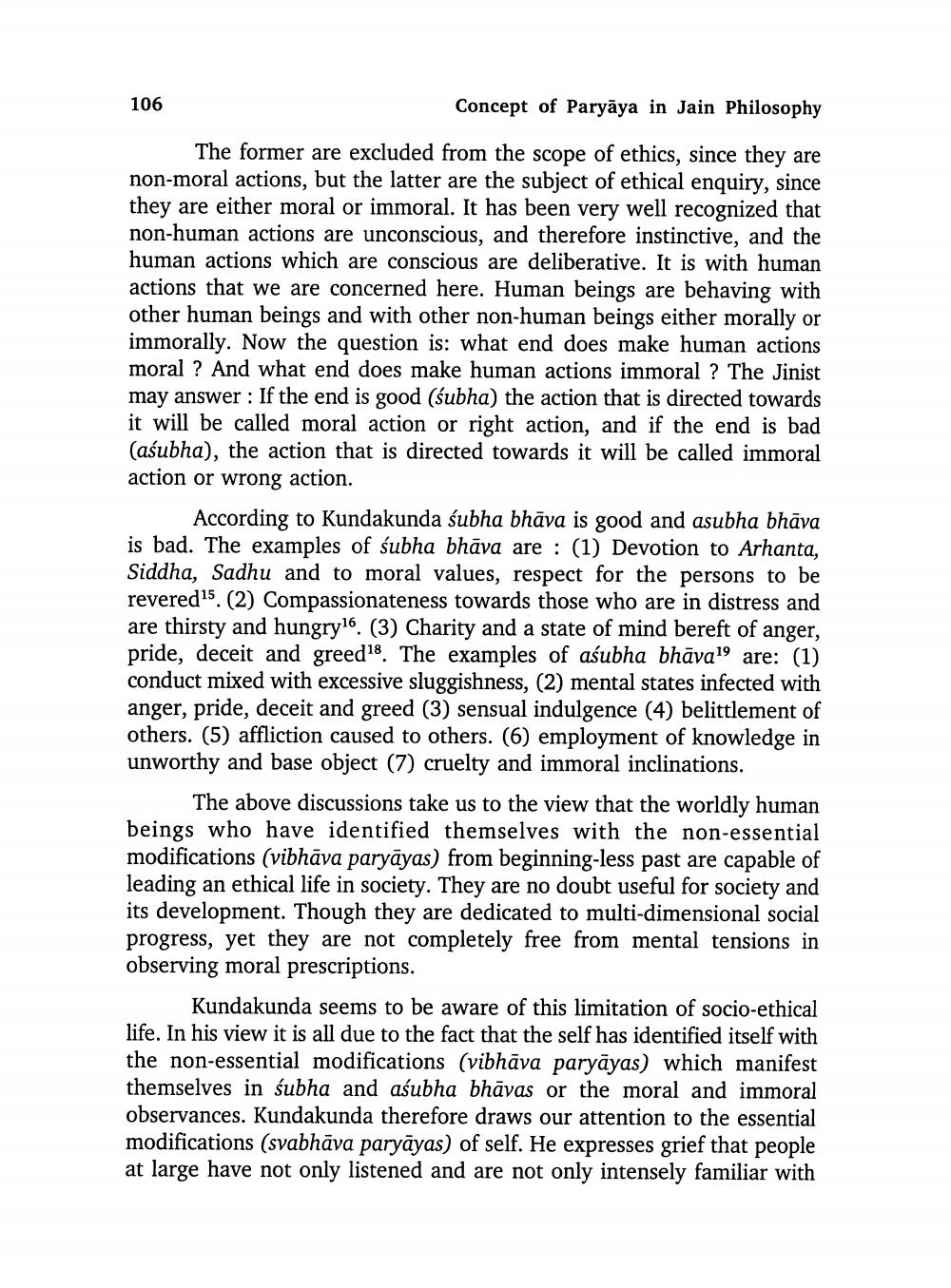________________ 106 Concept of Paryaya in Jain Philosophy The former are excluded from the scope of ethics, since they are non-moral actions, but the latter are the subject of ethical enquiry, since they are either moral or immoral. It has been very well recognized that non-human actions are unconscious, and therefore instinctive, and the human actions which are conscious are deliberative. It is with human actions that we are concerned here. Human beings are behaving with other human beings and with other non-human beings either morally or immorally. Now the question is: what end does make human actions moral ? And what end does make human actions immoral ? The Jinist may answer : If the end is good (subha) the action that is directed towards it will be called moral action or right action, and if the end is bad (asubha), the action that is directed towards it will be called immoral action or wrong action. According to Kundakunda subha bhava is good and asubha bhava is bad. The examples of subha bhava are : (1) Devotion to Arhanta, Siddha, Sadhu and to moral values, respect for the persons to be revered15. (2) Compassionateness towards those who are in distress and are thirsty and hungry16. (3) Charity and a state of mind bereft of anger, pride, deceit and greed18. The examples of asubha bhava19 are: (1) conduct mixed with excessive sluggishness, (2) mental states infected with anger, pride, deceit and greed (3) sensual indulgence (4) belittlement of others. (5) affliction caused to others. (6) employment of knowledge in unworthy and base object (7) cruelty and immoral inclinations. The above discussions take us to the view that the worldly human beings who have identified themselves with the non-essential modifications (vibhava paryayas) from beginning-less past are capable of leading an ethical life in society. They are no doubt useful for society and its development. Though they are dedicated to multi-dimensional social progress, yet they are not completely free from mental tensions in observing moral prescriptions. Kundakunda seems to be aware of this limitation of socio-ethical life. In his view it is all due to the fact that the self has identified itself with the non-essential modifications (vibhava paryayas) which manifest themselves in subha and asubha bhavas or the moral and immoral observances. Kundakunda therefore draws our attention to the essential modifications (svabhava paryayas) of self. He expresses grief that people at large have not only listened and are not only intensely familiar with




